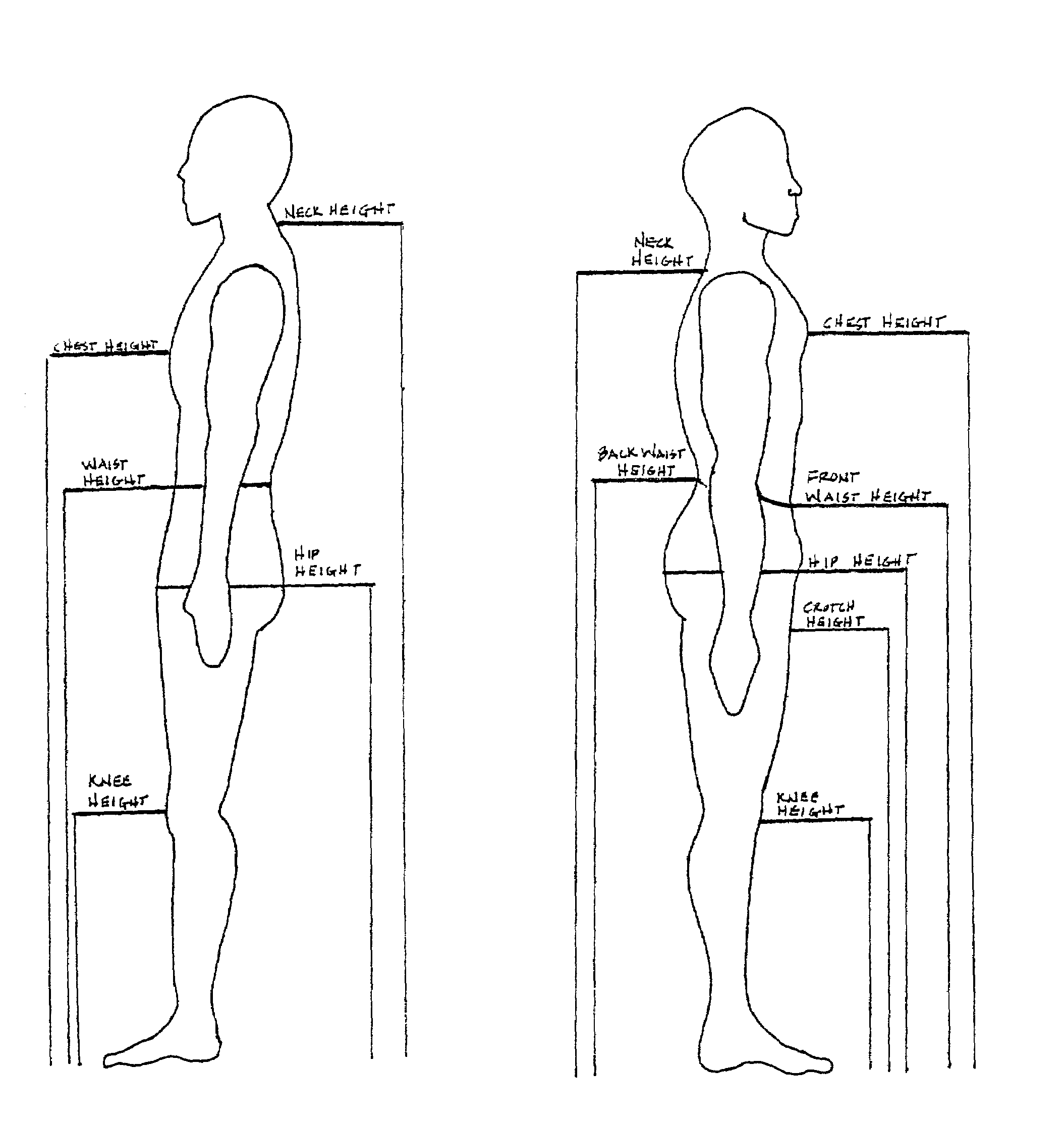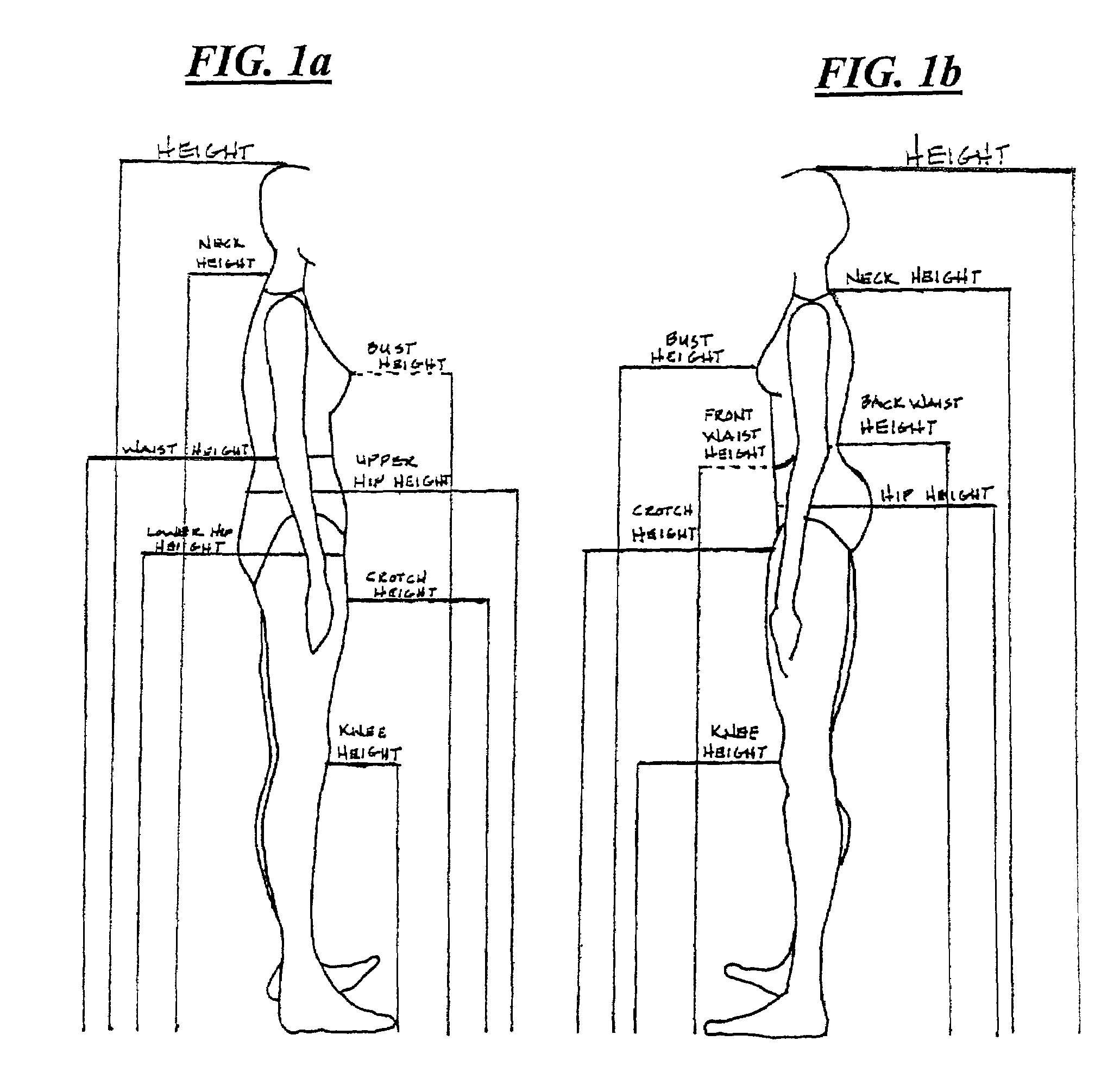Patterning system for a selected body type and methods of measuring for a selected body type
a technology of a selected body type and a patterning system, applied in the field of patterning system, to achieve the effect of enhancing health and safety
- Summary
- Abstract
- Description
- Claims
- Application Information
AI Technical Summary
Benefits of technology
Problems solved by technology
Method used
Image
Examples
example 1
Head
[0187]The cranium is a body part analyzed in terms of a Black body and an ethnicity solution. According to forensic studies, individuals with a Black body have a smaller skull than the industry-standard. More than a difference in size, a Black body solution informs that there is a difference in the distribution of cranial mass whereby the Black body the has a smaller head and a greater depth from the top of the head to the bottom of the forehead, relative to the industry-standard body. It is not uncommon for a man with a Black body to bend the brim of his hat or cap in an effort to reshape the hat, enabling the hat to more adequately cup the head.
[0188]As indicated in FIGS. 9a–10b3, conventionally, baseball caps are patterned wide and not sufficiently deep for the Black body. Bending the bill (visor) of the cap alters the dynamics of the cap. The goal of the hat or cap wearer is not necessarily to achieve a certain appearance as it may be to merely hold the hat on the head. FIGS...
example 2
Nose / lips
[0189]Referring to FIGS. 1a–12b, the Black body has a broader nose bridge, broader nostrils and lower nostrils than the industry-standard body. The Baylor College of Medicine Institutional Review Board approved a study that supports this declaration. The study states: “The most notable differences found in measurements of Caucasian and African-American female noses included nose width nasal root width, the length of the fleshy lower part of the nasal septum, nasal bridge inclination, and the angle between the nose and the upper lip.” The study concluded, “The differences found between Caucasian and African-American women, and the variablility within the latter group, suggests that new standards be adopted for nasal analysis.” (A New Guide Developed for Nasal Analysis of African-American Women, 2001, published by the American Academy of Otolaryngology-Head and Neck Surgery) With the Black body, eyewear tends to be awkward and sometimes painful. Eyewear for the Black body fre...
example 3
Neck
[0191]Referring to FIGS. 8a–8b, the neck of an individual with a Black body is generally more upright than is taken into account with the industry-standard shoulder measurements. When a Black body wears an industry-standard proportioned article of clothing having a collar or in contact with the neck, such as the shirt of FIGS. 29a–29a3, the clothing pushes the neck forward and causes tension on the neck and head. The clothing does not lie properly on the Black body because most garments of industry-standard cut allow for a curved or forward neckline. The contrast in need is most observable in the industry-standard collar 2910 of FIGS. 29a1–29a3 and the Black body the collar 2915 of FIGS. 29b1–29b3.
PUM
 Login to View More
Login to View More Abstract
Description
Claims
Application Information
 Login to View More
Login to View More - R&D
- Intellectual Property
- Life Sciences
- Materials
- Tech Scout
- Unparalleled Data Quality
- Higher Quality Content
- 60% Fewer Hallucinations
Browse by: Latest US Patents, China's latest patents, Technical Efficacy Thesaurus, Application Domain, Technology Topic, Popular Technical Reports.
© 2025 PatSnap. All rights reserved.Legal|Privacy policy|Modern Slavery Act Transparency Statement|Sitemap|About US| Contact US: help@patsnap.com



